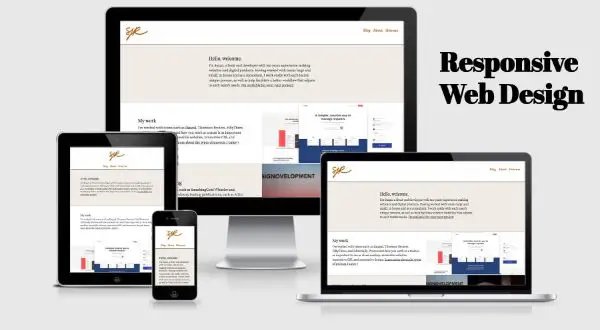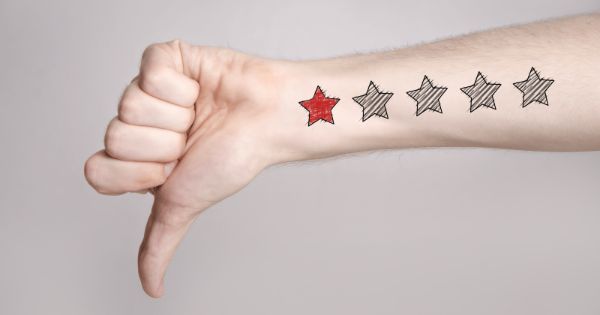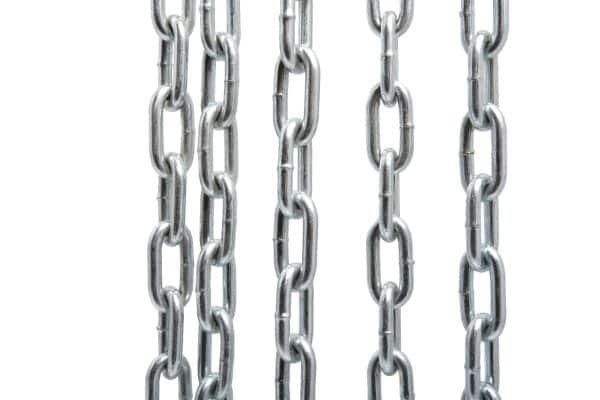Line25 is reader supported. At no cost to you a commission from sponsors may be earned when a purchase is made via links on the site. Learn more
10 Things Not to Do While Designing a Website for Restaurants. A website is something that creates a long-lasting impression on a new user’s mind. And as they always say, the first impression is the last. If you make the first impression wrong, you have lost the battle. But, if you hit the right notes, you may create a lasting impression where a user comes to your website repeatedly. Here, we are going to talk about websites that belong to restaurants. There are certain things you have to take care of when you are about to design a website for a restaurant. This blog post focuses significantly on the factors that decide the feasibility of a website for in the restaurant / food / catering industry.
A restaurant owner should be careful to get a good website developed. Certain things always hurt a website’s reputation, and we are going to look at those things in this blog. Let us take a look.
1. Music in the background:

Some people love music to an extent where they tell their designers to add background music to their website. And this is equally correct for the websites owned by hotels and restaurants. Playing background music in the dining area is different, while it is a different story to have a website with background music. Most people are dependent on the Internet to look for places to dine. And the last thing they are expecting is a restaurant website that has background music.
It becomes a problem when a guest is searching for a place to dine and lands on your website while he is in a situation where music is not allowed. While the music on the website is a big no, it is difficult to turn off the music on a mobile-based website. On the tiny mobile screen, it becomes challenging to look for a mute button while the music keeps on playing. Hence, background music should never be allowed on any website unless the website belongs to a musician.
2. Videos on the website:

The videos that automatically opens up when you open a restaurant website’s home page is an everyday annoyance. We always visit numerous websites and have seen the web site’s load time decreases because the webpage does not render until the video shows up. In this era of fast life, nobody likes to wait. Moreover, a high-quality video takes up a lot of internet connection on mobile phones along with its processor’s performance. There is a time and place to upload a video but not on a website. You can always upload a video on social media platforms like YouTube, Instagram, and Facebook, where people come to watch similar kinds of content.
In addition to the factors mentioned previously, the unnecessary sound that video emits causes a lot of embarrassment when the user is in a very silent place. With a tiny mobile screen, it is challenging to look for a mute button or a close button. Even if the user is browsing your website with a video on it, it comes across as rude and improper. Video marketing is a thing, but it loses importance if the video is in an unsuitable place. Marketing videos should always feature on your social media accounts
3. Prevent using Adobe Flash:

When we talk about Flash, the days when there was not a single website without Flash are gone. Flash is becoming obsolete. Flash in the HTML websites is excellent when you have to put slideshows, which reduces the load time. When Flash works in the background of the site, it does not bother the content on the website. A single click will make you jump to the reservation page, while another click will take you to the page for restaurant addresses and directions. In addition to this, the links don’t disappear behind the images.
But, these days, Flash has been replaced with new and more advanced tools, and we don’t see a website that is backed by Flash anymore because Flash-based content does not work on all the devices and web browsers. Many of the features offered by Flash should function using HTML5. Hence, the bottom line is that you should build a visually appealing website that performs well.
4. Website design that is not responsive:

Restaurateurs may or may not know about the term called “responsiveness.” A responsive website is the time taken by a website to load completely, is ready for interaction, is irrelevant to the browser, and is the device the user uses. With the increased usage of the Internet and fast internet connections, a website with low response time is deemed pointless. There are many gadgets with varying screen sizes, developing a site only for a particular phone model or tablet is not practical. Responsive websites are the websites that function adequately irrelevant of the device and its screen size.
A responsive website changes its form and its functional elements according to the screen dimensions of the device. Moreover, Google is very fond of the websites that are trustworthy, compatible, and redirection of the site because of the changing methods. A few months back, Google published that they love the mobile-friendly websites while a user is looking for a website through his mobile phone.
When a website senses the device, it redirects the user to a mobile site if he is browsing the website through the mobile browser. Likewise is true for other devices. A responsive website offers excellent customer experience and also takes care of how Google ranks the site on its search results page.
5. A website that is never updated:

Some restaurants are quick to create a website but never update it for fear of the expenditure caused to the restaurant to hire an IT guy. With changing menu, timings, and locations (rarely, but sometimes, they do), you need to update your website regularly. There are chances that links to your restaurant’s social media may also change. Hence, you should always look after it.
A restaurant’s website should be checked for updates at least once a month, along with an examination of the website’s accuracy and its performance on the search engine results page. Along with all these factors, the site should have regular maintenance sessions to keep it from dropping down in the search engine results page of the Search engines.
6. A website with no blogs:

Blogs can be a powerful tool for having more website visitors when it comes to food and restaurants. You can use blogs for announcements, recipes, or an article related to food and food connoisseurs. Blogs help restaurateurs communicate with their potential customers, specifically on social media platforms. Google favors the sites that have good content, which can make you have a lot of visitors. Putting a recipe on your blog that may or may not be a part of your restaurant possesses a different level of strategy to attract more visitors.
Consistently, posting recipes like once or twice a month may make your customers wait in anticipation of an upcoming recipe of a dish, which is right for your website. It can cause your website traffic to go up and make you rank better on the search engine results page. People who look at your blog posts and recipes don’t need to stay somewhere in the radius of your restaurant’s physical presence. But if they like your post and share the link of the blog post with other people, it can significantly increase a search engine. Hence, when you share something openly on a website or a blogging platform, search engines think of you as an authority.
7. Low-quality images or absence of images:

When someone visits your website, the necessary thing he or she notices is the images on your website. A picture is worth a million words, they say. Hence, only pictures won’t help your site. A good quality, nicely captured photos make a world of difference. There is a revolution going on with images and videos in the world of social media.
Facebook timeline concept evolved overnight and allowed high-resolution images on the user’s wall. Instagram supports high-quality photos and short videos. Pinterest allows a user to save and pin images and links to his pinboard. All these things derive a very significant conclusion. Larger images received a better response towards the website and user engagement.
Hence, the importance of having good images increased over time. As a restaurant owner, you should include pictures of events, foods, and beverages captured by a professional photographer. Eventually, a good photograph of a dish lures the customer in for a dining experience. Using social media platforms to endorse your famous dishes is also an excellent way to bring more users to your website for more details.
8. Too many links:

Some restaurant websites place all the essential links on the home page, in the navigation area, or the header section of the webpage. It is bound to take away a user’s attention from the critical content on your website. Eventually, the user loses interest while looking for information for his queries and decides to leave.
By overcrowding your website with links, may drive your customer away because he is unable to find the required information. He fails to receive the message your restaurant is trying to communicate. Hence, focus on minimal content and put your best foot forward. This would help make the visitor place a reservation request on your website.
9. Third-party content:

These days, a lot of users rely on ordering food online. Hence, the restaurateurs place a link to a third-party website. It allows the customer to order food on their website through the third-party food delivery website. Therefore, the customer is quick to jump to the online delivery website. This kind of behavior increases the bounce rate, and your site loses importance.
The concept of online food ordering and delivery has taken not only the cities but also countries by storm. The food delivery partners are running a thriving business because this trend is here to stay for better. Because of this, restaurants have seen the benefits of ordering food online. The online ordering of food has increased the efficiency of the restaurant employees. It has happened because the need to answer the calls from the customers has decreased significantly.
So many restaurants deliver food via an online ordering system without having third party delivery partners. With this, it has increased personnel efficiency, and online orders are less prone to have errors while taking an order. Hence, you should always implement an online ordering system that allows a user to order online.

You don’t need to have an entire social media news feed of your restaurant’s account on your website. There are tools to introduce your social media’s latest post. Howeever, it should not include your entire social media account posts. Having your social media cover up the vital area of your website is very distracting for first-time visitors. And this should be avoided as long as it is possible for you.
It is okay if you think your website should display your social media presence if you believe it is what people search for. And in some cases, social media is vital to convert your restaurant into a brand. A website is a marketing tool that holds more importance than social media platforms if the restaurant has no social media accounts. But, if you have a social media account that is updated frequently according to the requirements, you should have social media buttons and not the feed on your website.
The website should have social media buttons from where the visitor can navigate to your social media accounts. You should place the social media buttons strategically where you are sure that your visitor is bound to click the buttons. These buttons should take your website visitor straight to your social media accounts that feature some of your best images and videos.
Conclusion:
The design parameters are subject to change when a restaurant website designing is concerned. Following the factors mentioned above can affect your digital footprint to a significant extent. Whether you develop a website for mobile or desktop browsing, you should include the creation of a website as a part of your restaurant. You should not exclude the website creation from the restaurant domain. When you consider your site as part of your business, the relationship you’re your customers strengthens. It creates a sense of trust and faith between your business website and your customer, which in turn creates a loyal customer base.
